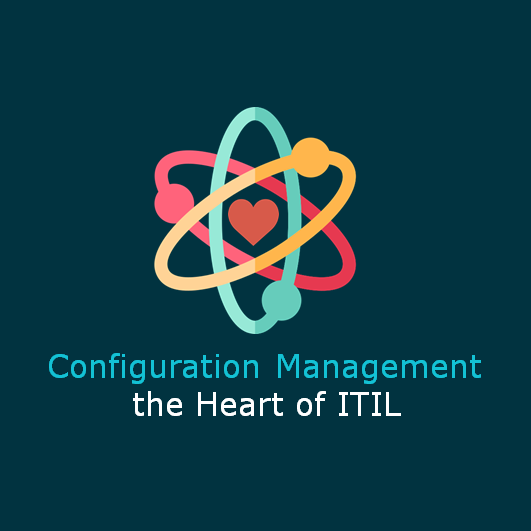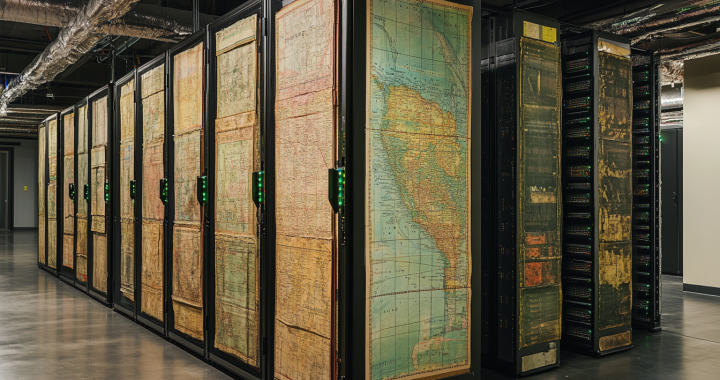For many organizations, IT starts small and grows. They don’t plan out how their IT organization will interact with the rest of the business. Instead, they hire a person or two to handle a few computers and maybe set up a server. Over time, those roles grow alongside the business. Eventually, IT leadership recognizes that the business needs more out of the IT organization than what they’re providing. Sometimes it’s because customers aren’t able to get the hardware or software they need.
Whatever the cause, many organizations come to realize that their IT organization just isn’t cutting it.
In lots of instances, those organizations choose to use ITIL, the IT information library.
What’s ITIL?
In the 1980’s, the British government established the IT information library. In the decades since, they’ve updated it repeatedly. It defines a series of best practices that aid IT organizations in delivering high-quality IT solutions to their business. ITIL is actually a very big set of guidelines. The original library was more than thirty books! Even though it’s changed many times throughout the years, ITIL still has a core focus on some key principles. What’s top among those principles is the idea that IT organizations should focus on providing value, work iteratively, and start from where they are.
This means that organizations shouldn’t have to drastically re-organize the way they do business to adopt ITIL best practices. Instead, they should look at how they’re providing value already. They should then identify ways they can provide more value to the business, and implement those changes over time, a little bit at a time. Short, achievable goals can mean that the business entities who rely on the IT organization see constant improvement, instead of waiting for big, difficult projects that may or may not deliver.
A common early step in this process is to implement a configuration management database.
What’s Configuration Management?
Configuration management is the process of storing information about the IT resources within your organization in a centralized repository. Usually, this takes the form of a relational database. As the name implies, you also store information about the configuration of the system inside that database.
Starting your configuration management project can feel a bit like you’re starting in the deep end. Even in businesses with less than 100 employees, it’s likely you have a lot of IT resources. To do configuration management right, you need to find every one of those resources! That said, you should plan to treat creating a configuration management database like any other project. Plan how you’ll undertake asset discovery. Evaluate options for the configuration management database software. Define a realistic picture of success. Then, put that plan into action, and execute it to completion.
How Does Configuration Management Highlight Value of Your Assets?
As noted, configuration management takes all the information about your business’s IT assets and brings them to one place. This is a benefit. When you have information that’s spread out in multiple silos, it’s difficult to find it what you need. If a critical system needs to be replaced, it’s a lot easier to fix it when you know how it’s supposed to be configured. A breakdown in a critical system is much easier to fix when you know how that system works.
Configuration management projects bring additional benefits to IT organizations. It’s common for IT leadership to discover assets they didn’t know existed during the asset discovery phase of a configuration management project. Usually, these assets were quietly doing their jobs, but they were unsupported by IT. IT organizations discover these business-critical assets haven’t received updates in years. This is a serious security risk. Identifying those assets and establishing a proper support plan is one way configuration management is a great side effect of configuration management projects.
How Does Configuration Management Optimize the Value of Your Assets?
Another way that configuration management provides value is by optimizing your IT assets. Once you know where all your IT assets are and how they’re performing, you can standardize on optimal configurations for all of your assets. Configuration management means you know which laptops perform the best for which employees. It’s easy to spot which servers have non-standard configurations when all your configurations are in a single place. Your IT organization can provide value by helping your users get the most out of their systems by standardizing on high-performance configurations.
Finally, IT organizations can minimize the amount of time they spend keeping systems up to date. With standard configurations on all systems, activities, like applying patches, are a one-step process. That means your business is more secure while your IT organization spends less time updating systems.
How Can We Make Configuration Management Successful?
Even though the goal of configuration management is to store all of the information about your IT assets in one place, the project doesn’t need to be monolithic. You can approach it piecemeal. Instead of trying to gather information about every asset across the whole company, focus on one division at a time. Work with the employees there to identify IT assets and how those assets are configured. Once you’ve done this, train those employees to work with the configuration management system. This means that when they need to change configurations or add new systems, they’ll know how to work with your IT team.
This kind of iterative approach pays off in more ways than one. Not only will you break the project into manageable chunks, but you’ll also learn along the way. It’s guaranteed that you’re going to do some things wrong at first. Instead of doing all those things wrong across the whole organization, you can limit your mistakes to just a few employees. Those employees will be able to provide feedback to your team, and that feedback will mean that your project will do better. This ties into one of the core principles of ITIL, which is being iterative in your processes. You should learn from each step of your implementation to make the next one better.
Another way to be successful is to pick high-quality software. When you centralize your configurations, you want to use software that’s simple and straightforward. Choosing a quality implementation platform like Enov8 will save your team hundreds of hours and make the software easier to use for your business.
How Is Configuration Management the Heart of ITIL?
Good configuration management plays directly into the values that are at the heart of ITIL. It not only provides value to the business, but it makes life easier for IT employees too. You can approach configuration management as an iterative process, implementing it one step at a time. That might start with a basic database that tracks laptops and servers, and wind up with a system that tracks items all the way down to the component level. The heart of ITIL is that your team makes those choices.
ITIL isn’t a monolith. The goal isn’t to say that every organization should implement each part of the system. And at no point should you expect that everyone will implement each system in the same way. You should optimize the implementation for what your business needs. Your first step will always be sitting down with stakeholders in your business and determining what will work best for your team and theirs. That’s the heart of ITIL, and good configuration management is one step on the way to making your IT organization better for everyone.
Author Eric Boersma
This post was written by Eric Boersma. Eric is a software developer and development manager who’s done everything from IT security in pharmaceuticals to writing intelligence software for the US government to building international development teams for non-profits. He loves to talk about the things he’s learned along the way, and he enjoys listening to and learning from others as well.



